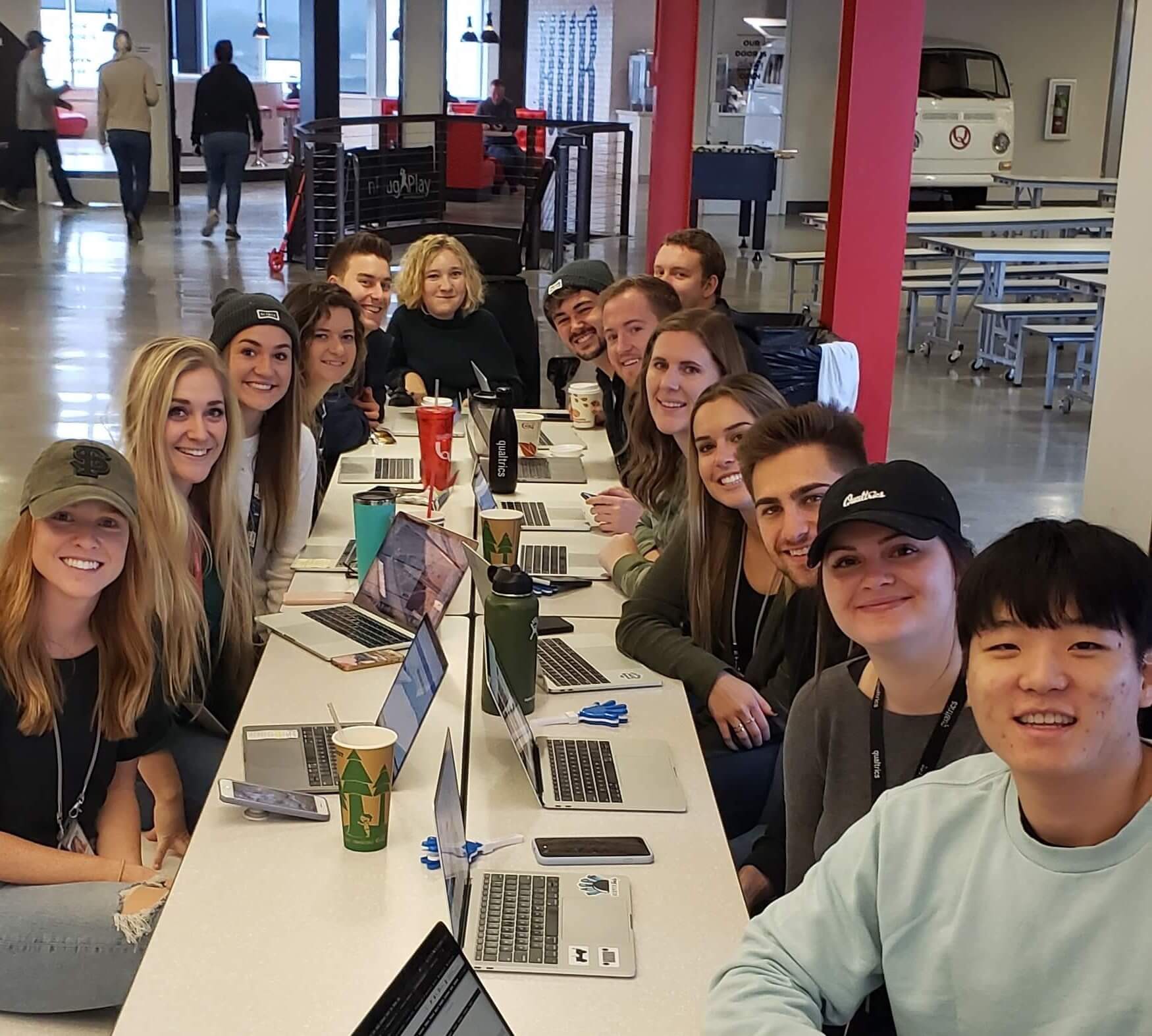
From the Q-mmunity
Laura on the Role of Accessibility in Her Work From Home Life
The importance of accessibility has never been greater. In a world where many companies have shifted to a pure work-from-home environment, doctors offices have moved to offer greater telehealth options, digital meet-ups and events have become a part of everyday behaviors, and online shopping has reached new heights, the “ease and safety” that these solutions offer also have an ability to severely impact many people if (and when) accessibility hasn’t been considered.
We asked Laura about her experience of moving to the work from home environment - what’s gone right and what new challenges have been introduced by the move. Here’s her story.
I’ll preface this by saying that I can’t write an article about what working from home is like for the disabled; to do so would be like suggesting that a single avocado can represent all fruits effectively. Disability is too vast and varied to be summed up in one person, so all I can tell you is what working from home is like for me.
Here’s your crash course in my disability, Spinal Muscular Atrophy: Your nervous system never quite figures out how to talk to your muscles about growing. Your muscles stay very small. You substitute a power wheelchair for said muscles. End crash course.
At exactly 10:30 AM on March 12, Ryan Smith sent the email that had us all reaching for our monitors with one arm and our car keys with the other (can we all agree that that email was scheduled?). I don’t drive, so I immediately launched a minor feat of social engineering that involved getting my sister and best friend to cross paths at their college for a key exchange so that my friend could swing by my apartment and bring my wheelchair-friendly van up to the office and collect my things.
While I waited for Claire to arrive, I must’ve had at least ten offers of helping hands (and trucks) from the eminently decent people of Qualtrics, who saw my obstacles and proved then and there that One Team is more than just a flavor of TACOS.
And then came the months of work from home.
Work from home—for many of us—looks like rolling out of bed and landing in front of your laptop with still-mussed hair. It looks like munching on a slice of toast at lunchtime while the faint resonance of a long-forgotten Korean rice bowl tickles at your brain stem. It looks like periods of mind-dulling lethargy interspersed with sprints of efficiency that have an unfortunate tendency to happen around midnight.
It looks like a gnawing worry for the health and financial well-being of your friends and family.
For me, though, work from home has a slightly different face. Sometimes it looks like a bit of hunger or thirst that grows until it crosses far enough into “ravenous” territory to make me wake my nocturnal sister so that she can rummage in the fridge for me. It looks like researching which of my teammates owns clients starting with T yet again because my sticky note fell down and I can’t quite reach it. Surprisingly, it also looks like having about 15% more energy available, since that’s evidently what I spend on not falling over in the bus while commuting to work.
It looks like that extra grain of terror that Covid-19 might get into my lungs because I’ve already survived more cases of pneumonia than anyone else you know will ever contract and I’m not really looking to add another to the list right now.
Working from home is in many ways more accessible than office work to those of us who see leaving the house as a legitimate struggle. In other ways, though, the physical support system that the proximity of a thousand helpful people provides is too much to give up; in short, it’s just...complicated. Different. There’s no single solution to the struggles that working from home creates for disabled employees.
Qualtrics is doing a great job of addressing the needs of the many, so my ask is this: if you’re in a position to see to the needs of the few, please do it.
The need for accessibility and community in a successful work from home experience cannot be overstated. Multiply this importance by all the other “from home” experiences that people currently have and it becomes clear how critical continued growth in awareness around accessibility is. As businesses around the world are now planning what a return to the post-COVID environment looks like for their teams and their customers, understanding the opportunities and limitations for accessibility that they currently have will need to play its part in making those business-critical decisions.
On Global Accessibility Awareness Day, we challenge everyone to deeply consider the role of accessibility in responding to the needs of customers, teams, and peers. To treat a return to an office environment as an opportunity to take action on making a difference to the way accessibility is treated.